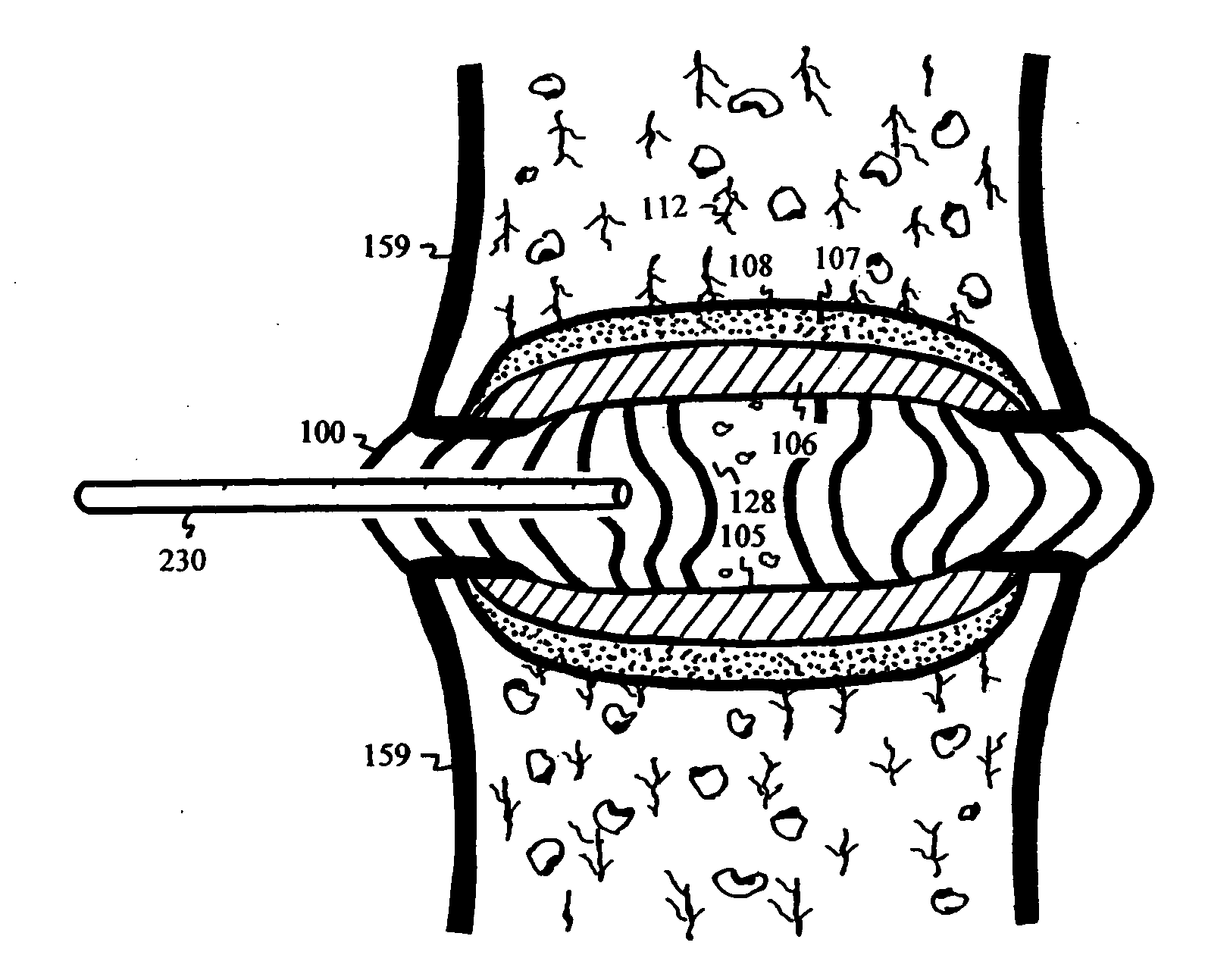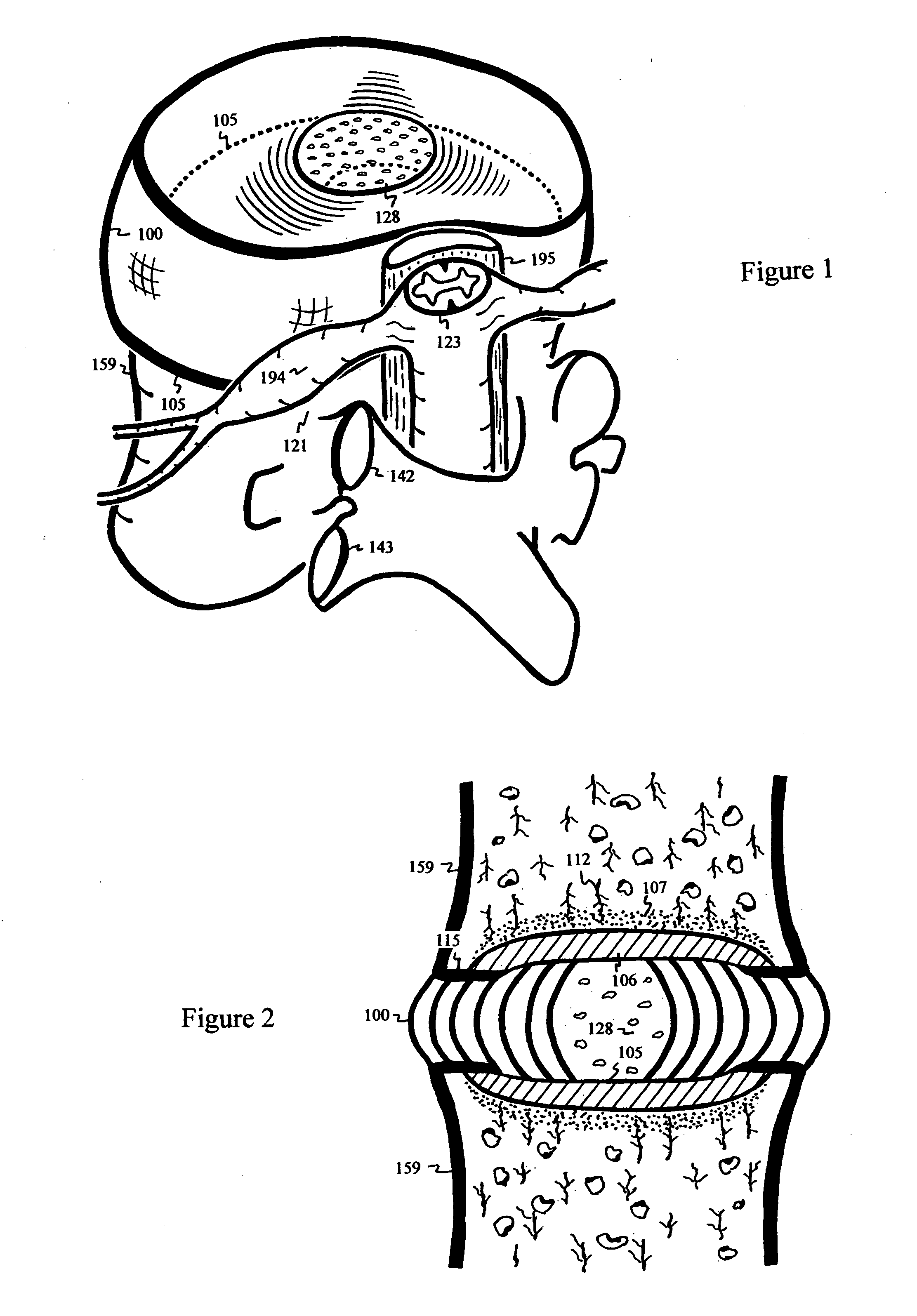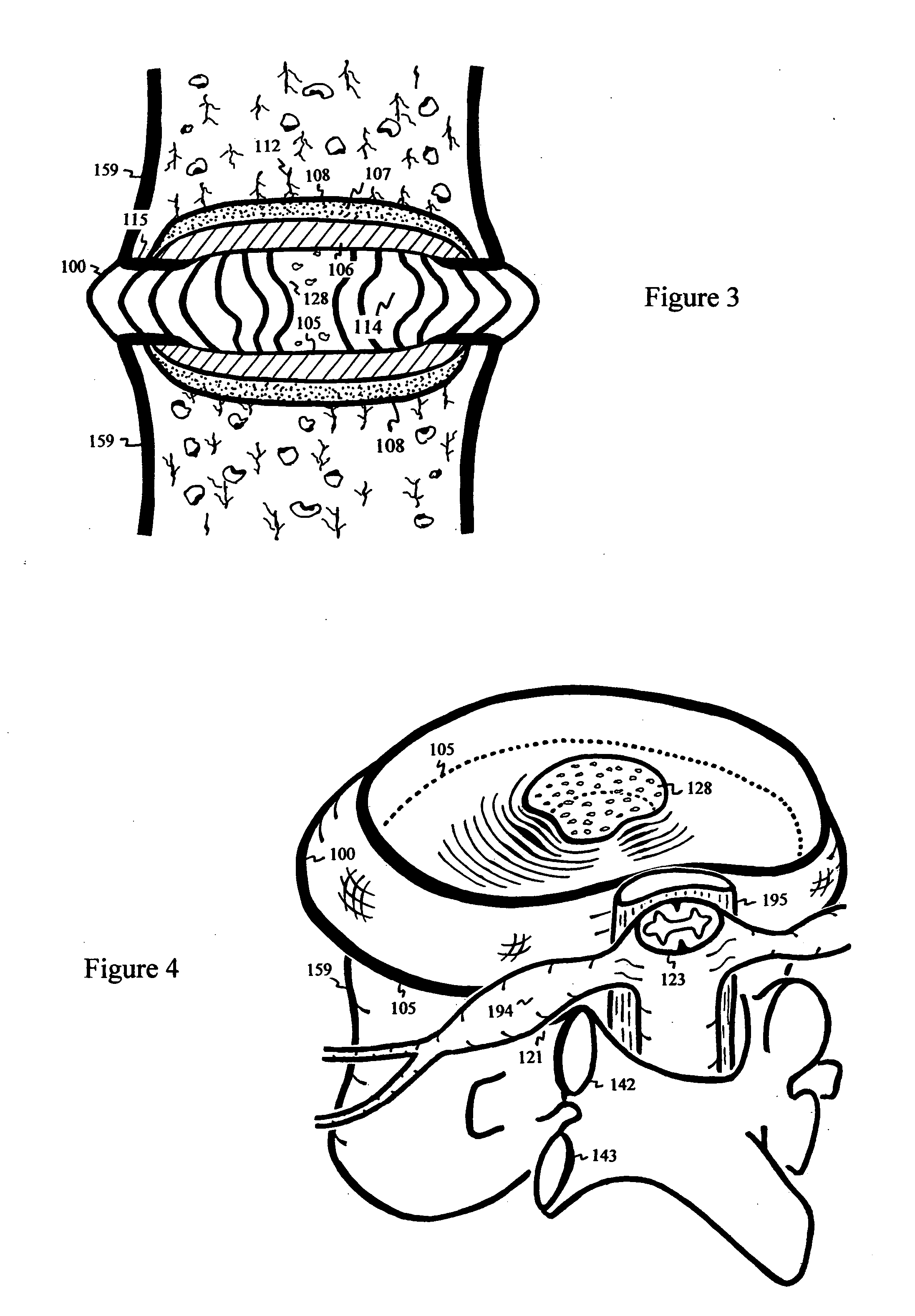Treating back pain by re-establishing the exchange of nutrient & waste
a technology of nutrient exchange and back pain, applied in the field of treating back pain by re-establishing the exchange of nutrient & waste, can solve the problems of low back, no intervention other than discectomy can stop the production of lactic acid, and no other intervention can achieve the effect of halting disc degeneration, reducing bending during endplate puncture, and reducing bending
- Summary
- Abstract
- Description
- Claims
- Application Information
AI Technical Summary
Benefits of technology
Problems solved by technology
Method used
Image
Examples
Embodiment Construction
[0112]Since diffusion from the endplate 105 is crucial for maintaining the intervertebral disc, effort is made to re-establish nutrient and waste exchange between the nucleus pulposus and circulation within the vertebral body. Guided by anteroposterior and lateral views from fluoroscopes, a trocar 103 enters posteriolaterally, 45° from mid-line into the disc 100, as shown in FIG. 5. This guiding technique is similar to the one used in diagnostic injection of radiopaque dye for discography or chymopapain injection for nucleus pulposus digestion. A dilator 230 is inserted over the trocar 103, as shown in FIG. 6. The trocar 103 is then withdrawn. The dilator 230 remains as a passage leading into the disc 100, as shown in FIG. 7. FIG. 8 shows the distal end of the dilator 230 near the nucleus pulposus 128 of the degenerating disc 100.
[0113]An elastically curved needle 101, as shown in FIG. 9, is resiliently straightened in a rigid sleeve 220 indicated in FIG. 10. The round cross section...
PUM
| Property | Measurement | Unit |
|---|---|---|
| pore size | aaaaa | aaaaa |
| diameter | aaaaa | aaaaa |
| diameter | aaaaa | aaaaa |
Abstract
Description
Claims
Application Information
 Login to View More
Login to View More - R&D
- Intellectual Property
- Life Sciences
- Materials
- Tech Scout
- Unparalleled Data Quality
- Higher Quality Content
- 60% Fewer Hallucinations
Browse by: Latest US Patents, China's latest patents, Technical Efficacy Thesaurus, Application Domain, Technology Topic, Popular Technical Reports.
© 2025 PatSnap. All rights reserved.Legal|Privacy policy|Modern Slavery Act Transparency Statement|Sitemap|About US| Contact US: help@patsnap.com



